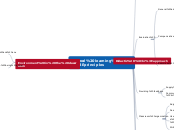General learning
principles
Didactic
approach
Helping to set goals
SMART strategy
SPECIFIC
MEASURABLE
ACTIONABLE
REALISTIC
TIME-BOUND
A checklist stating
what needs to be
done and what's
needed to do it is very helpful.
Evaluation
General advices
Set a timetable of the tests
with the other teachers.
The tests should be customized
in time and content without
limiting the qualitative part.
Avoid exams in the last
few learning hours.
Compensative instruments
Provide compensatory tools
(e.g. in the case of SLD speech
synthesis tools, spell checkers, verb tables, etc.).
Allow the use of maps in both
written and oral tests.
Exercises and correction
Prefer multiple-choice questions.
Prefer structured exercises.
Avoid notional questions.
Report errors by category.
Encourage self-correction by the student.
Providing feedback
Supply regular, quality feedback
Communicate regularly about progress
and strategies for improvement
Classroom organization
Adjusting seat plan
Dosing information
Break learning into small steps
Use diagrams, graphics and pictures
to augment what students say in words
Written transfer of information
Give the student organizers - graphic organizers, checklists,
subtitles, outlines etc. that assist
with written work and assignments
Multisensory approach
Effective for all learners but particularly
effective for dyslexic students
Integrates visual, auditory, tactile (touch)
and kinesthetic (movement) learning elements
Different teaching methods activate
different parts of the brain
Helps learners discover their learning style and
the techniques best for them
Lesson planning and importance of routine
Efficient routines make it easier
for students to learn and achieve more.
Environment in the classroom
Strategies to reduce stress and anxiety in classroom
Signs of anxiety.pdf
Helping with being social
Remove barriers and design a friendly classroom
Organize the classroom in a
way that would make it easy to
work in groups and in a cooperative way
